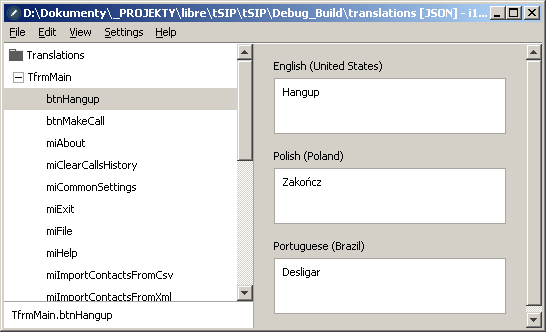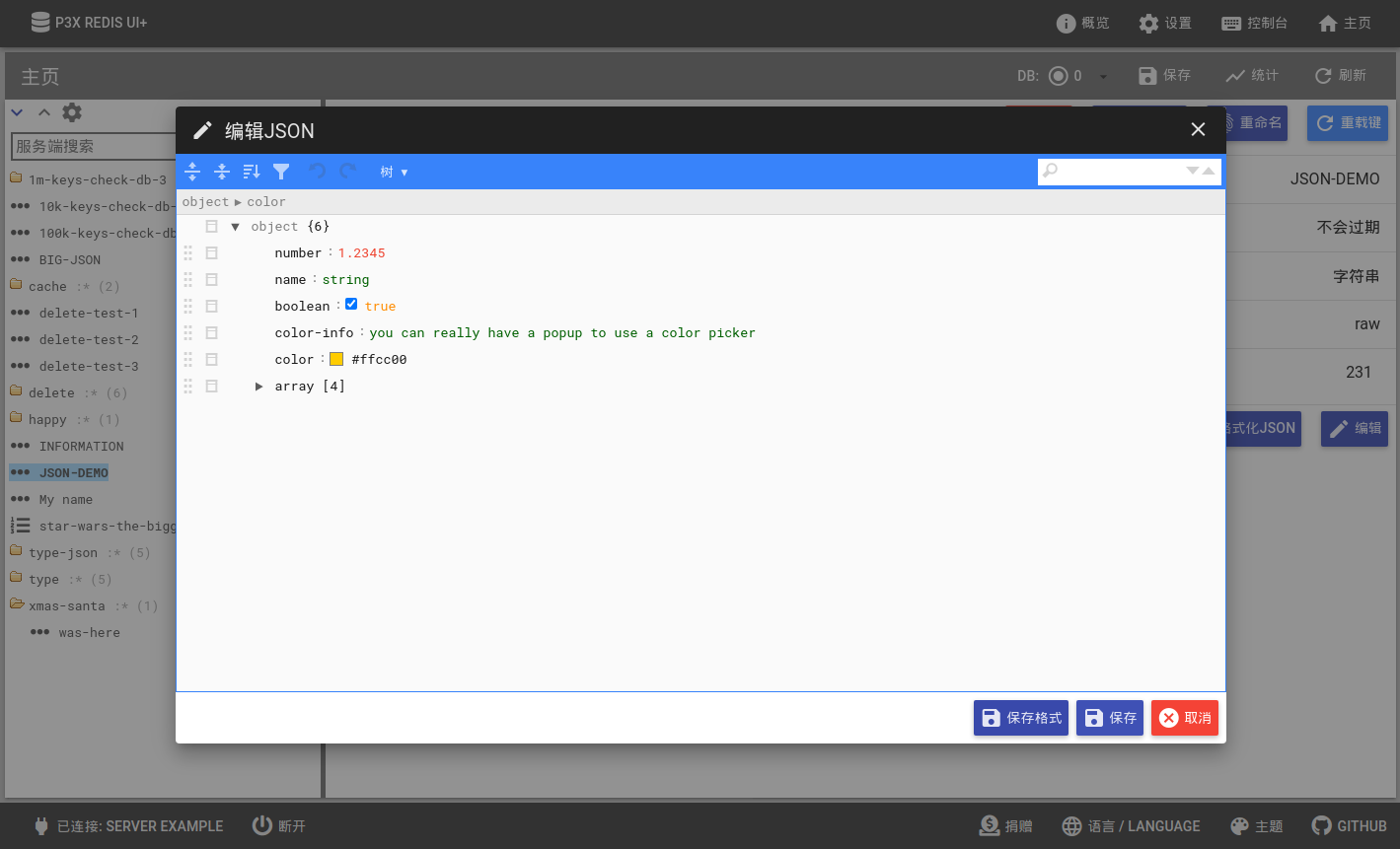

- I18n json editor how to#
- I18n json editor install#
- I18n json editor full#
- I18n json editor software#
- I18n json editor download#
The second argument is the text domain which must match the text domain slug specified by your plugin.Ĭommon functions available, these mirror their PHP counterparts are: In the above example, the function will use the first argument for the string to be translated.
I18n json editor full#
Return el( 'p', blockProps, _( 'Hello World', 'myguten' ) ) Įxpand full source code Collapse full source code WordPress 5.0 introduced the wp-i18n JavaScript package that provides the functions needed to add translatable strings as you would in PHP.įirst, add wp-i18n as a dependency when registering your script:Ĭonst ) The release of WordPress 5.0 brings a similar process for translation to JavaScript code.

I18n json editor how to#
Any detected translation strings are added to to allow the community to translate, ensuring WordPress plugins and themes are available in as many languages as possible.įor PHP, WordPress has a long established process, see How to Internationalize Your Plugin.
I18n json editor software#
When you upload your software to, all JS and PHP files will automatically be parsed. Providing i18n support to your plugin and theme allows it to reach the largest possible audience, even without requiring you to provide the additional language translations. Internationalization is often abbreviated as i18n, where 18 stands for the number of letters between the first i and the last n. Internationalization is the process to provide multiple language support to software, in this case WordPress. This project is released under the MIT license.Browse: Home / Block Editor Handbook / How-to Guides / Internationalization Internationalization Edit What is Internationalization? Take a look at src/main/resources/bundles on how to create a translation file. Help translatingĭo you want this editor to be in your native language? You are free to create a pull request or issue with a new translation file of your desired language.

Some of this settings can also be applied on each project individually via Settings > Project Preferences. Here you can change the project file structure, the filename of the translation files you want to use (by default they are named translations), select whether you want to minify and or flatten the translations on save and change interface related properties. You can access the settings of the editor by going to Settings > Preferences.

When using the folder structure folders will be named after the locales and the files within these folders will be of the form translations (the name can be changed in the settings menu). When you create a project with a flat structure there will also a file be created called translations, this is a file you can use as default/fallback translation file (if you don't need a default/fallback file, you can simply remove it from your project folder). (the name and place of the locale within the name can be changed in the settings menu). When using the flat structure the translation files are all in the same folder and follow the name pattern translations_en_US, translations_nl_NL etc. This setting can be changed in the settings menu, the default setting is flat structure. The translations files can be stored in two different ways. and selecting the root folder of your existing project or by simply dragging your project folder into the application. You can always import an existing project by going to File > Import Project. Each time you start the editor it will open the last project you was working on. or start adding translations either via Edit > Add Translation., via the right click menu in the left side panel or via the key field at the bottom of the left side panel. From here you can add more locales by going to Edit > Add Locale. After selecting the root folder you'll be asked to add your first locale. After choosing the desired file format for your translations, select the root folder where you want to store your translation files. To start, open the application and go to File > New Project to create a new project. If you're on Linux you can use the application by running the. If you're on Mac you can use the application by running the.
I18n json editor install#
If you're on Windows you can install the application by running the.
I18n json editor download#
You can download the latest release by going to this page and downloading the. The application requires java 8 to be installed on your system.


 0 kommentar(er)
0 kommentar(er)
